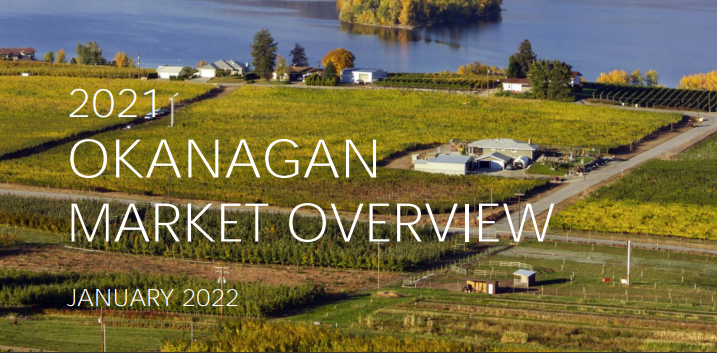
The inventory of available homes for sale continues to be the main challenge. December 2021 marks the lowest inventory on record for the interior region with 1,491 active listings. This represents a 41.8% decline compared to the same period in 2020. The South Okanagan has seen the largest crunch in housing supply with a 55% decline in the inventory during the same period. Over the past few months, the market has seen a slight uptick in the number of new listings. Yet, demand continues to outpace supply. The housing shortage further compounds from sellers deciding to keep their homes off the market. Some do it to avoid the health risks from potential buyers. Others prefer to wait to secure a property to relocate to before listing their home. It is not uncommon for some to experience sellerʾs remorse as households fail to secure a new property after the sale of their home. While not the norm, some offers are including a sellerʾs relocation clause. Buyerʾs frustration has been exacerbated as some houses are getting scooped before they are formally listed for sale. All of these reinforce how critical it is to be working with the right team of professionals to secure a property. Builders have ramped up the number of housings starts in the later part of the year, yet the number of units under construction remains below historical highs. In 2021, there were 2,977 units added to the market. The region has experienced an influx of high-rise condos near the downtown core. As of December 2021, there were 4,378 housing units under construction, a 14.9% increase compared to the same period in 2020. However, pandemic-related disruptions have impacted construction timelines and costs for builders. A recent survey from the Independent Contractors and Businesses Association estimates that nearly 90% of the projects in interior BC are taking longer to source construction materials. The average length of construction for a new single-family home in Kelowna was 10.3 months in 2021, up from 9.6 months in 2020. However, it is not uncommon that the possession of a new home be delayed up to a year for some projects
Increased competition combined with a lack of available product is putting upward pressure on prices and quickly eroding affordability in the Okanagan. Home prices increased 30.0% in December 2021 compared to the same period last year. The benchmark price for single family homes in the Central Okanagan region crossed the psychological $1 million mark for the first time in December 2021. Buyers are feeling the pressure from rising home prices. This has led some borrowers to take on high levels of debt. Households with no equity, mainly first-time buyers, are finding it difficult to purchase a home, with many feeling that the market is running away from them. Despite this, local municipal governments continue to push toward densification to increase the overall housing stock and support affordability. According to a recent survey from the Bank of Canada, many expect inflation to remain higher than the Bankʾs two percent target. This has prompted many economists to revise their forecasts, with a few anticipating that the Central Bank will begin its hiking cycle following its January 26, 2022, meeting.
Most analysts see interest rates beginning to rise earlier in the spring. This has prompted some buyers to jump into the market ahead of mortgage rate increases. A recent research report from BCREA points out that historically, increases in interest rates are followed by a decrease in the number of home sales and a flattening of home prices. However, many regions in BC, including the Okanagan, are currently experiencing record-low numbers of active listings. Therefore, it is unlikely to see significant home price declines from interest rates. Going forward, demand for housing will continue to be strong as the Okanagan is one of the most attractive locations to live in the country. Sales are likely to temper for the first two months of the year as the cold snap traditionally keeps buyers in hibernation. Some regions will likely experience a slowdown in activity driven by the lack of inventory. Buyer fatigue and affordability concerns are also starting to weight in on the demand. Housing supply is an ongoing concern as listings have never been this low or slow to come back.